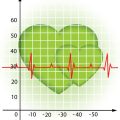Introduction to Herbal Wellness in the UK
Herbal wellness has long been woven into the tapestry of British culture, reflecting a deep respect for nature’s rhythms and an enduring belief in the body’s capacity for self-healing. Across the rolling hills and ancient woodlands of the UK, generations have turned to native plants not only as remedies but also as gentle companions on the journey towards holistic health. Drawing from both folk wisdom and time-honoured traditions, the practice of herbalism here is far more than a method of symptom relief—it is a philosophy centred around restoring natural balance between mind, body, and spirit. By embracing local heritage and working in harmony with the environment, British herbal wellness offers a uniquely grounded approach to wellbeing that honours both the land and those who dwell upon it.
2. The Philosophy of Harmony: British Herbs in Mind-Body Balance
At the heart of herbal wellness lies the ancient philosophy of harmony—a principle deeply rooted both in traditional medicine and contemporary holistic practices. Within the context of native British plants, this concept finds a unique expression. Much like Eastern traditions, which emphasise the balance of Yin and Yang or the smooth flow of Qi, British folk medicine has long recognised the role of local herbs in restoring equilibrium to the body and mind.
Modern holistic wellness echoes this wisdom by viewing health not merely as the absence of illness but as a dynamic state where physical, emotional, and mental aspects are all aligned. Native British herbs have been traditionally selected and blended with an intuitive understanding of their energetic qualities—whether warming or cooling, calming or invigorating—to gently bring the whole person back into balance.
Bridging Tradition and Modern Wellness
Today, these traditional insights resonate with current approaches to stress management, emotional wellbeing, and preventative health. By embracing locally grown botanicals such as nettle, chamomile, elderflower, and hawthorn, individuals can support their own journey towards inner harmony. These herbs work subtly yet profoundly: calming anxious thoughts, easing physical tension, and supporting restful sleep—qualities much needed in our fast-paced modern lives.
Key Native British Herbs for Mind-Body Balance
| Herb | Traditional Use | Holistic Benefit |
|---|---|---|
| Nettle (Urtica dioica) | Blood purifier; strengthens vitality | Energises while grounding; supports resilience against stress |
| Chamomile (Matricaria chamomilla) | Calms nerves; soothes digestion | Promotes relaxation; aids restful sleep |
| Elderflower (Sambucus nigra) | Cools fevers; eases respiratory discomfort | Clears mental fog; uplifts mood |
| Hawthorn (Crataegus monogyna) | Tones the heart; stabilises emotions | Nurtures emotional steadiness; supports cardiovascular health |
The Living Connection to Nature
By incorporating these native herbs into daily routines—whether as infusions, tinctures, or simple culinary additions—individuals reconnect with both the land and themselves. This conscious engagement fosters not only physiological benefits but also a sense of peace and belonging. In this way, native British plants serve as gentle guides on the path to mind-body harmony, blending time-honoured tradition with modern self-care.
![]()
3. Healing in the Hedgerows: Notable Native British Plants
The British countryside is a tapestry of ancient hedgerows, meadows, and woodlands that quietly nurture a wealth of healing plants. For generations, these native botanicals have played a central role in traditional folk remedies and are now being rediscovered for their therapeutic potential within modern herbal wellness.
Nettle (Urtica dioica): The Mineral-Rich Tonic
Nettle, with its unmistakable sting, has long been revered by British herbalists as a spring tonic. Traditionally, it was used to cleanse the blood, strengthen vitality, and ease joint discomfort. Packed with iron, calcium, and other minerals, nettle remains a favourite for supporting energy and nourishing the body during seasonal transitions. In contemporary practice, nettle infusions are valued for their gentle detoxifying effect and ability to restore balance to both body and mind.
Elderflower (Sambucus nigra): Nature’s Cooling Comfort
Come early summer, elder trees bloom along country lanes and village greens, offering clusters of creamy flowers. Elderflower has been cherished in British homes as a remedy for fevers, colds, and hay fever thanks to its cooling and anti-inflammatory properties. Traditionally steeped as tea or made into cordial, elderflower soothes respiratory discomfort while uplifting the spirit—a quality still recognised today by herbalists seeking to harmonise the body’s response to seasonal challenges.
Hawthorn (Crataegus monogyna): The Heart’s Guardian
The hawthorn tree, with its delicate white blossoms and vibrant red berries, holds a special place in British folklore as a symbol of protection and renewal. Hawthorn has been traditionally used to support heart health, both physically and emotionally. Its leaves, flowers, and berries are known to gently strengthen the cardiovascular system while calming anxious minds. Modern herbal practitioners often recommend hawthorn preparations for those seeking resilience in times of stress—honouring its reputation as nature’s heart tonic.
Modern Uses Rooted in Tradition
Today’s herbalists draw upon centuries-old wisdom when incorporating these native plants into holistic wellness routines. Whether enjoyed as infusions, tinctures, or gentle tonics, nettle, elderflower, and hawthorn embody the enduring connection between Britain’s land and its people. By weaving these time-honoured herbs into daily life, we nourish not only our bodies but also foster a deeper sense of harmony with nature’s rhythms.
4. Foraging and Using Herbs Safely in the British Countryside
Foraging for native British herbs is a time-honoured tradition, deeply woven into the local culture and folklore. However, to benefit from herbal wellness while honouring nature, it is essential to approach wild-harvesting with mindfulness and respect. This ensures both personal safety and the preservation of Britains precious natural habitats.
Responsible Wild-Harvesting: Respecting Nature’s Balance
Sustainable foraging is at the heart of British countryside etiquette. Only take what you need—never more than one third of any plant population—to allow regeneration. Avoid uprooting entire plants; instead, harvest leaves or flowers selectively. Always seek permission if foraging on private land, and be aware of local conservation laws protecting certain species.
Key Guidelines for Responsible Foraging
| Guideline | Explanation |
|---|---|
| Harvest Sparingly | Take only small amounts from abundant patches to ensure sustainability. |
| Avoid Protected Species | Familiarise yourself with endangered or protected plants using local resources. |
| Leave No Trace | Restore the area after collecting; do not disturb wildlife habitats. |
| Use Clean Tools | Prevent the spread of disease by cleaning hands and tools before harvesting. |
Identification Tips: Knowing Your Herbs
Mistaking one plant for another can pose health risks. Use a reliable field guide or join a local foraging group to learn from experienced herbalists. Key identification features include leaf shape, flower colour, scent, and habitat. If unsure about a plant, it is safest to leave it be—many toxic lookalikes exist in the British countryside.
Cultural Etiquette: Honouring Local Traditions
The British countryside has a rich heritage of herb gathering, rooted in community sharing and respect for the land. Traditional customs encourage gratitude towards nature, such as leaving an offering (a simple “thank you” or a small gesture) after harvesting. Engage with local communities, learn about regional practices, and always share knowledge respectfully without depleting wild resources.
Summary Table: Safe Foraging Practices in Britain
| Practice | Description | Cultural Note |
|---|---|---|
| Sustainable Picking | Select mature plants, avoid rare species. | Supports future generations’ access to herbs. |
| Cautious Identification | Double-check plants before use. | Reduces risk of poisoning; fosters learning circles. |
| Cultural Courtesy | Respect landowners and public spaces. | Keeps traditional rights alive; builds community trust. |
| Nature Appreciation | Acknowledge the gift of wild herbs. | Nourishes harmony between people and land. |
The path to herbal wellness begins with responsible foraging, deep observation, and heartfelt gratitude—a reflection of the harmonious relationship between people and nature that defines British herbal traditions.
5. Creating Herbal Remedies: Recipes and Rituals
Integrating native British plants into your daily wellness routine is both a time-honoured tradition and a practical way to nurture balance of body and mind. Drawing from the wisdom of folk herbalists and the philosophy of harmony found in traditional practices, preparing your own herbal teas, tinctures, and balms can become an enriching ritual.
Brewing Traditional British Herbal Teas
Classic British herbs such as chamomile, nettle, elderflower, and lemon balm make soothing infusions that support wellbeing. To prepare a calming tea, simply steep one teaspoon of dried chamomile or fresh lemon balm in a cup of boiling water for five to ten minutes. Strain and enjoy in the afternoon or before bed to encourage relaxation and digestive comfort. For added synergy, blend herbs such as mint for clarity or rose petals for emotional balance.
Crafting Tinctures at Home
Tinctures are concentrated extracts that preserve the vital properties of plants like dandelion root or hawthorn berries. To make a basic tincture, fill a sterilised jar with chopped fresh herb (or half full with dried), then cover completely with a neutral spirit such as vodka. Seal and store in a cool, dark place for four to six weeks, shaking occasionally. Strain through muslin and decant into amber bottles. Take a few drops daily under the tongue or add to water for gentle support of heart or liver health.
Soothing Herbal Balms for Everyday Use
Balms made from native British herbs can soothe skin and enhance your self-care rituals. Melt equal parts beeswax and infused oil (such as comfrey or calendula) over low heat, then pour into clean tins to set. Massage gently onto dry hands or tired feet as part of your evening routine, letting the calming aroma ground both body and spirit.
Weaving Rituals into Modern Life
The true essence of herbal wellness lies in mindful integration. Whether sipping nettle tea at breakfast or applying balm before sleep, let these moments become small acts of self-kindness. Set intentions as you prepare each remedy—inviting peace, resilience, or clarity—and allow these ancient practices to harmonise your daily life amidst the pace of contemporary Britain.
6. Herbs in Contemporary British Wellbeing Culture
In modern Britain, the resurgence of herbal wellness reflects a harmonious blending of tradition and innovation. Native British plants are enjoying renewed appreciation, not just as historical curiosities but as vital contributors to everyday health and holistic wellbeing. Across the UK, people are rediscovering the gentle power of herbs such as nettle, elderflower, chamomile, and yarrow—cherished both for their healing properties and their deep connection to local landscapes.
Home Remedies Reimagined
Many Britons today incorporate native herbs into daily self-care routines. Infusions of peppermint or lemon balm soothe digestion after a hearty meal, while elderberry syrup becomes a staple during the winter months for immune support. These practices often echo ancestral wisdom passed down through generations, yet they are thoughtfully adapted to fit contemporary lifestyles—appealing to those seeking natural alternatives to pharmaceuticals and fostering a sense of connection with nature’s rhythms.
Community and Professional Integration
The movement towards herbal wellness extends beyond the home. Herbalists and wellbeing practitioners across Britain increasingly integrate native plant remedies into their therapies, whether through bespoke tinctures, restorative teas, or soothing balms. Wellness centres, spas, and holistic clinics now frequently offer treatments that celebrate local botanicals—such as wildflower-infused massages or guided herb walks in the countryside—encouraging mindful engagement with the land.
Cultural Shifts Towards Balance
This growing interest in herbal remedies aligns beautifully with broader shifts in British culture towards sustainability, mindfulness, and preventative care. People are drawn not only to the potential health benefits of native plants but also to the opportunity for reconnection—with heritage, with community, and with the earth itself. In this way, herbal wellness is more than a trend: it is an invitation to restore balance between body and mind by honouring Britain’s rich botanical legacy.
7. Conclusion: Revitalising Connection with Native Nature
In reflecting upon the healing traditions of British herbalism, it becomes clear that reconnecting with our native plants is more than a return to ancient remedies; it is an essential step towards holistic well-being, community strength, and environmental harmony. Modern life often disconnects us from the land, yet by embracing herbs such as nettle, elderflower, yarrow, and hawthorn—plants deeply rooted in our countryside—we restore not only physical vitality but also cultivate mental clarity and emotional balance. In line with the principles of both traditional Chinese medicine and Western herbalism, this reconnection encourages us to seek wellness that harmonises body, mind, and spirit. Moreover, valuing local flora fosters a sense of stewardship for the environment and nurtures sustainable practices within our communities. By revitalising our relationship with native nature, we honour the wisdom of the past while nurturing health and resilience for future generations.


